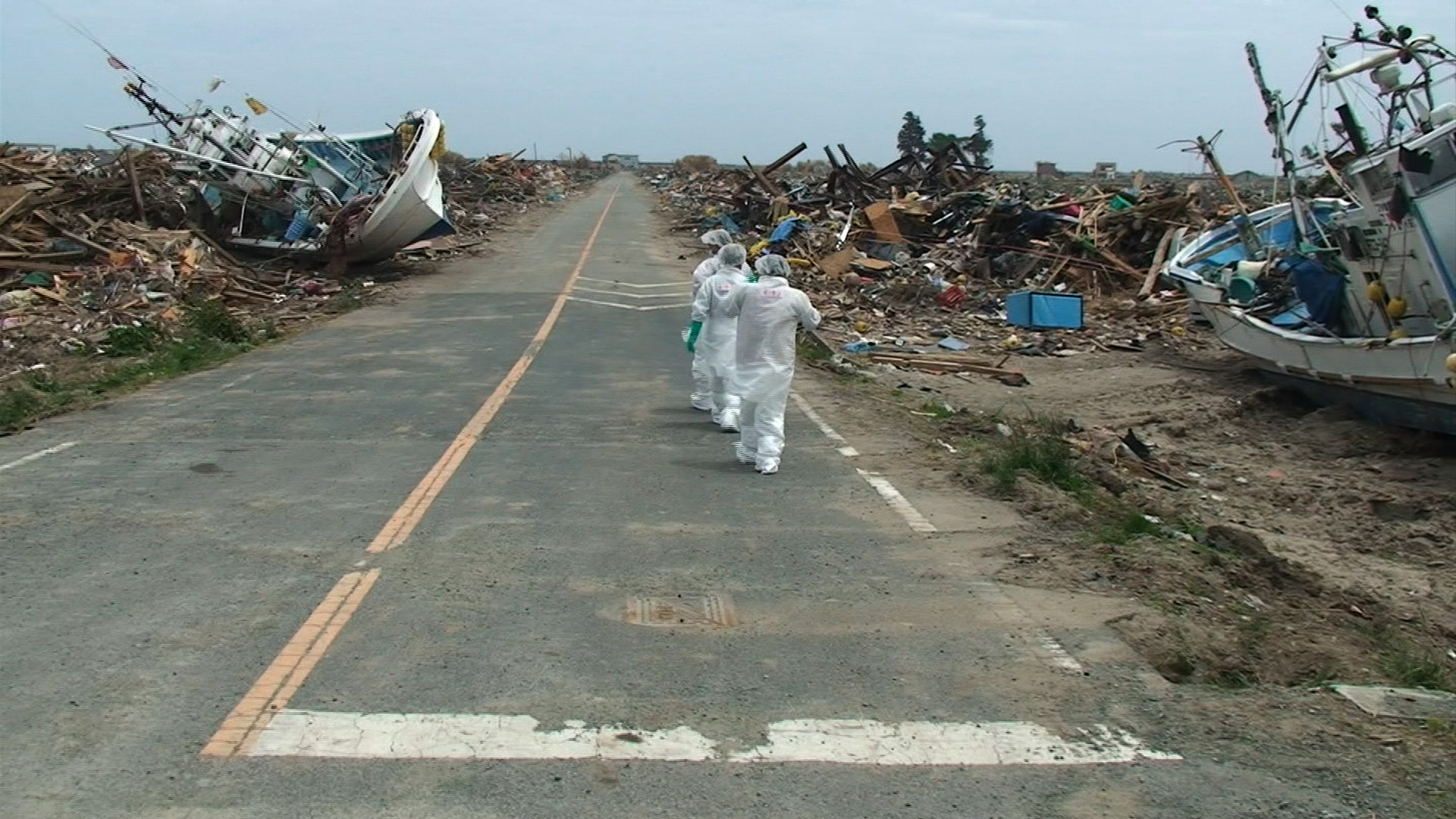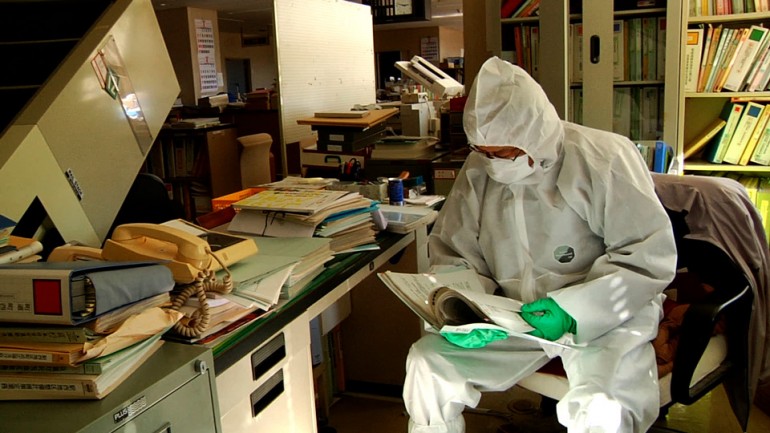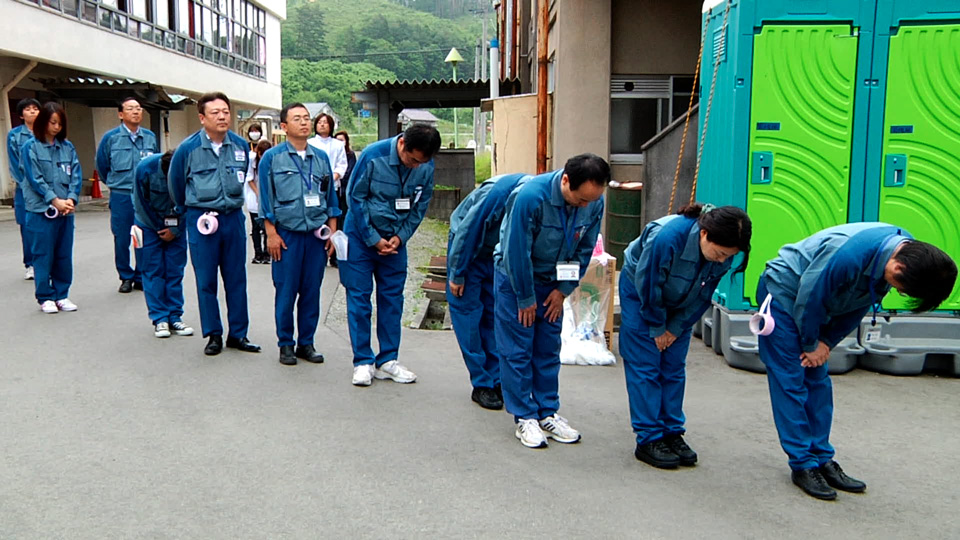Article by Wun Kuen Ng
NUCLEAR NATION is a documentary of Japan’s class of nuclear refugees as a result of the March Tsunami/Earthquake Disaster in March 2011. The release date for the U.S. theatrical premiere will be on Wednesday, December 11-17 at Film Forum, 209 West Houston Street.

The documentary follows the lives of the displaced nuclear refugees from Futabe township in temporary shelters after the 2011 Tsunami, and 8.9 magnitude earthquake hit the Fukushima Daiichi nuclear power station. Futabe being 3 km from the nuclear power plant evacuated immediately leaving citizens to flee with the shirt on their back. With nowhere to go, the nuclear refugees moved to at least six different temporary shelters. The lack of response from the Japanese government and Tokyo Electric Power Company (TEPCO) angers the evacuees who are living off the floor of an abandoned Kasai High School in the Saitama prefecture and eating out of lunch boxes. Having been told that it was safe and secure to build a nuclear power plant in their town, along with government subsidy, Futabe town prosper from the 50% revenue generated by the jobs of the power plant but it was short lived. Families in uprooted neighborhoods had their homes destroyed and ripped apart. Their homeland and local history became obliterated, and the government offered no assistance and abandoned the Futabe citizens when disaster struck the power plant in their town. Cities like Tokyo that benefit from the nuclear energy never hears about the true plight of the nuclear refugees nor do they get actual information from the press on the situation.
Born in Osaka, Japan, Atsushi Funahashi is the writer, director, and producer of this documentary. He and graduated from Tokyo University with a B.A. in cinema studies. He studied film directing in the School of Visual Arts. His debut film, Echoes (2002), was critically acclaimed, followed by another, Big River (2005). His documentary,” For the Joyful Moment of Life” (2005), won the Telly Award. He moved back to Tokyo in 2007. “Deep in the Valley” was his first Japanese film.
Funahashi began filming after March 2011. He depicts the period in which lives of the nuclear refugees are in limbo, just waiting for word and aid from the centre government. Living in classrooms with 20 people eating lunch boxes, with no privacy, and little money, they are without their land, home, business, or jobs, and do not know if and when they can return to their contaminant homes. As of July 2011, there were 1,001 evacuees; by November 2011, there were still 673 evacuees without a place to go. The Japanese government has failed the small town, only to use them for nuclear power plant. This has happened before in another town, now disappeared into the valley some 20-30 years ago. The government’s ambition of nuclear energy policy at any cost short can happen anywhere.
There were many poignant scenes in the documentary that depicts the sad tragedy of lost, displacement and government irresponsibility.
The Nakai family was once a family three until they lost its matriarch. Her body was not found until a month later. She was in the house and swept away by the tsunami. The father and son eventually bought an old home with the Tsunami insurance; both still unemployed.
Another victim family talked about the destruction of their contaminated homes. They described the moment they were allowed to reenter their homes to salvage their belongings. They spoke of objects that have the most sentimental value a jacket bought by a husband, DVDs of a daughter’s wedding, a favorite pair of black shoes, high school duffel bag, etc. They had to be suited up in protective gears before entering the destroyed town for one two-hour visit.
One family received public housing and sadly willed to start over. “We are not going back. We live here now,” the older couple said.
The unflinching scene of the cows melting away in the farm where they starved and died after a month of neglect is telling of the disaster. The cows and the farmer were exposed to radiation, but the government did not perform a radiation test on the citizens for safe measures.
There was a touching scene where Mayor Katsutaka Idogawa of Futabe confronts the government officials and exposes himself. It is humiliating to be lied to and treated like this by the government. He rethinks his former support of the government’s nuclear policy.
The film is worth seeing for its honesty and close-up look of the displaced population through no fault of their own. The documentary included an amateur footage taken by the son of the Nakai family as they pay homage to his home and mother with flowers. The documentary gave a variety of perspectives and calls attention to the price nation pays for nuclear energy. The Futabe incident was an example of the government negligence to its citizens. This incident was a way of turning the destroyed town into a toxic nuclear dumpsite instead.
Director: Atsushi Funahashi
Directors of Photography: Atsushi Funahashi & Yutaka Yamazaki
Musi: Tomoji Kuwaki
English Subtitling: Ivy Yukiko Ishihara Oldford


Leave a Reply